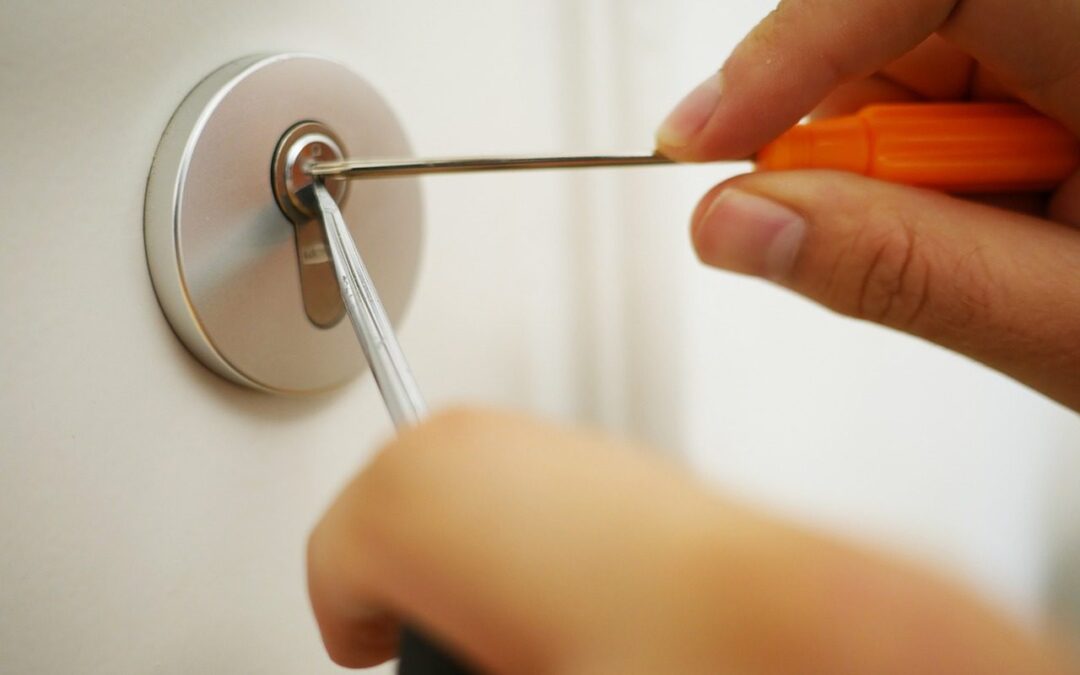Most people think of a lock as just a simple device that keeps doors closed. But to a locksmith, a lock is more like a witness—it can quietly show whether someone tried to force it open. Tiny scratches, dents, and patterns inside the mechanism can reveal a lot about what the lock has been through.
What Happens Inside a Lock
Every time you turn a key, small metal pins and springs move into perfect alignment to release the cylinder. When someone tries to pick or force that lock, those parts don’t move the way they’re supposed to. They scrape, twist, and leave behind clear signs of stress.
To the untrained eye, a lock might look normal. But under magnification, professionals can spot:
- Grooves left by lock-picking tools
- Uneven scratches where pins were forced
- Slightly bent or compressed springs from too much pressure
These details might seem minor, but they can confirm whether a break-in attempt occurred.
How Micro-Scratches Tell the Story
Micro-scratches are some of the most revealing clues. They appear when someone inserts tools or the wrong key into the keyway. A locksmith can often identify the type of tool used, how much force was applied, and even whether the attempt was made by someone who knew what they were doing.
Here’s what different marks often mean:
- Horizontal lines suggest a twisting motion inside the cylinder.
- Vertical marks show repeated attempts to lift the pins.
- Uneven wear may indicate a fake or worn-down key was used.
In short, these tiny imperfections record the difference between normal use and tampering.
Why High-Security Locks Make a Difference
Basic locks can show signs of tampering, but they’re easier to manipulate and harder to analyze afterward. That’s why many home and business owners switch to high-security door locks.
These locks use precision-engineered parts made from hardened steel, with tighter keyways and anti-drill features. They’re not only stronger—they also maintain cleaner, more consistent wear patterns. So if anyone tries to force them, the damage stands out clearly.
Installing high-security door locks makes it harder for intruders to get in and easier for you or a locksmith to confirm if someone has tried. It’s both prevention and detection in one.
The Role of Forensic Locksmiths
Forensic locksmithing combines investigation with mechanical expertise. Specialists in this field often assist law enforcement or insurance companies after a suspected break-in. They study the smallest details—wear marks, tool patterns, and material deformation—to determine what happened.
Using magnification and light analysis, they can often tell whether a lock was opened with the correct key, a bump key, or a pick. This process turns a simple lock into valuable physical evidence.
Preventing Problems Before They Start
The best way to deal with tampering is to make it unlikely in the first place. Regular maintenance and quality locks keep your property protected. Upgrading to high-security door locks helps you stay one step ahead, giving you both physical strength and peace of mind.
Keep your locks clean, lubricated, and inspected by a professional when they start to feel stiff or misaligned. That way, if anything ever happens, you’ll know the signs are real—not just normal wear.
The Silent Story in Every Lock
Every lock holds a history in its metal. It records every key used, every turn, and every attempt to open it. Sometimes that story is ordinary; other times, it reveals something suspicious. Knowing how to read those signs—and having the right hardware installed—can make all the difference.
Affordable Lock & Security Solutions helps homeowners and businesses protect what matters most with locks that resist tampering and tell the truth if someone tries. Because real security isn’t just about keeping people out—it’s about knowing when someone tried to get in.

